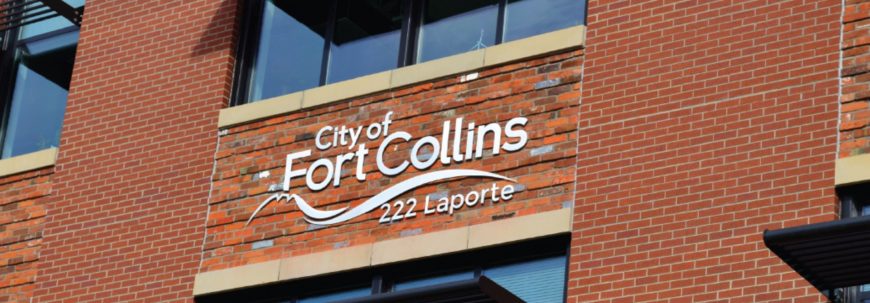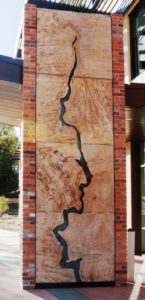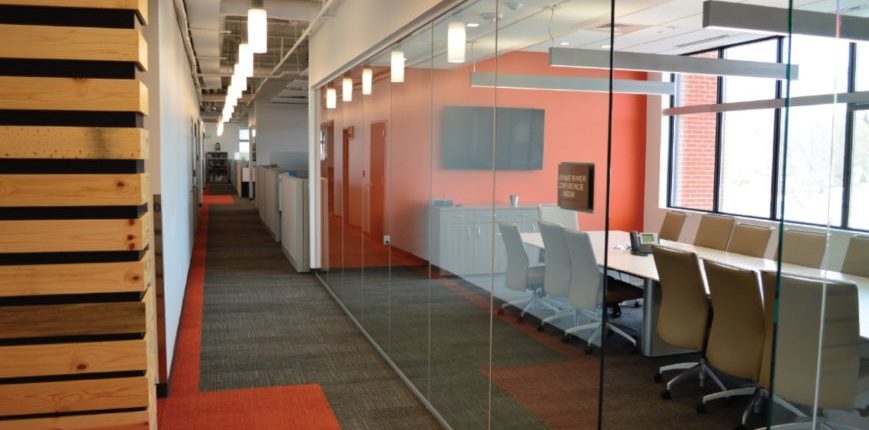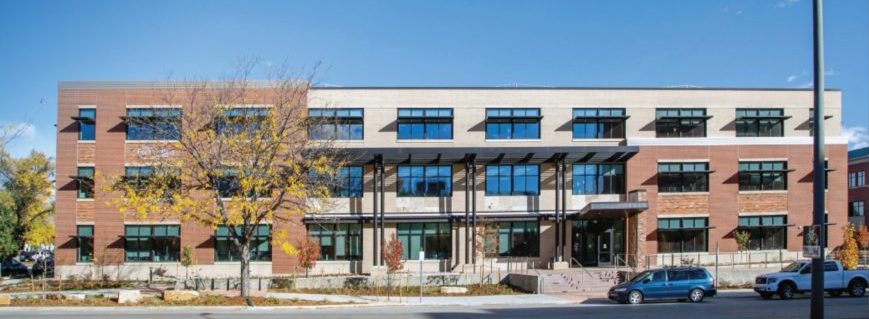
The Institute for the Built Environment (IBE) at Colorado State University has helped a City of Fort Collins building become the first in the state to attain a top sustainability ranking for new construction.
The IBE shepherded the city’s Utility Administration Building through the Leadership in Energy and Environmental Design Version 4 (LEED v4) process. The building at 222 Laporte Ave. is now the first new construction project in the state — and the third in the country — to receive the highest LEED rating, Platinum, through LEED v4.
A celebration and plaque ceremony for the facility and its certification will be held from 11 a.m. to 3 p.m. on June 8 at the building.
 New, higher standards
New, higher standards
The building, which opened last fall after 13 months of construction, went through the fourth and newest version of the U.S. Green Building Council’s sustainability certification. LEED v4 represents the council’s most comprehensive and stringent standards to date, so to receive a Platinum rating is quite an accomplishment.
“The U.S. Green Building Council continues to increase the requirements that you have to meet,” said Helene Lefkowitz, the IBE project manager who led the certification process. “They continue to raise the bar.”
The new 37,500-square-foot building houses the customer services and executive administration of Fort Collins Utilities, as well as the city’s Sustainability Services Division. IBE served as the LEED consultant for the facility; Lefkowitz was the liaison between the city and the U.S. Green Building Council as the project went through certification. IBE was involved throughout the process to ensure that sustainability strategies were included, and the institute performed research on green products and facilitated early design workshops.
Near net-zero
The building is very close to being a net-zero facility, Lefkowitz said, meaning that it produces almost as much energy as it uses, thanks to features like rooftop solar panels, advanced insulation and other innovative technologies and high-performance equipment.
City officials say that a key factor in reducing the building’s environmental impact was the use of an “integrated design process.” Unlike the traditional procedure in which plans and decision-making are handed off from the architects to the engineers to the construction contractors, the integrated design process brings all of the decision-makers to the table from the very beginning.
“That played a huge part in the project meeting such aggressive sustainability goals,” Lefkowitz said. “From the start, the city intended this to be a world-class building.”

In addition, she said, there was transparency in the selection of building materials used for the facility. It’s part of an emerging effort in the sustainability field to clearly identify the makeup and production of those materials — similar to the way products in grocery stores have labels identifying ingredients and other health information.
“City officials really pushed to know what was in the building materials they were buying, and got products that would not release harmful toxins to building occupants and were not made in ways detrimental to the environment,” Lefkowitz said. “That may seem like a no-brainer, but it’s not. Historically it’s often been hard to find out what’s in building materials and how they were made.”
Part of that effort involves using recycled materials (30,000 bricks were repurposed in the project) and new materials that in turn could be reused at the end of their lifespan. About 97 percent of the project’s waste was diverted from the landfill, and the landscaping was created using xeriscape principles to reduce water use.

The advanced insulation, coupled with high-performance glass and air sealing, reduced the need for large utility systems for heating and cooling the building. The structure features many windows to maximize natural light, as well as energy-efficient LED lighting where needed. The facility has water-efficient fixtures and 27 monitors that provide real-time information on water and energy consumption.
The city is now coordinating with IBE to conduct a post-occupancy survey on the new building, to learn how it is performing for employees in areas like air quality, thermal comfort, lighting, acoustic quality, layout and other features.
At the June 8 celebration, 30-minute building tours will be held from 11 a.m. to 12:30 p.m. and from 1:30 to 3 p.m. (reservations are required at the link below). Remarks start at 12:30 p.m. The event is free and includes a barbecue lunch, but attendees must register at http://col.st/EMLJY.
The City of Fort Collins is co-sponsoring the event with Buffalo Security, IBE, Climate Wise and Assa Abloy. The Institute for the Built Environment is part of CSU’s College of Health and Human Sciences.